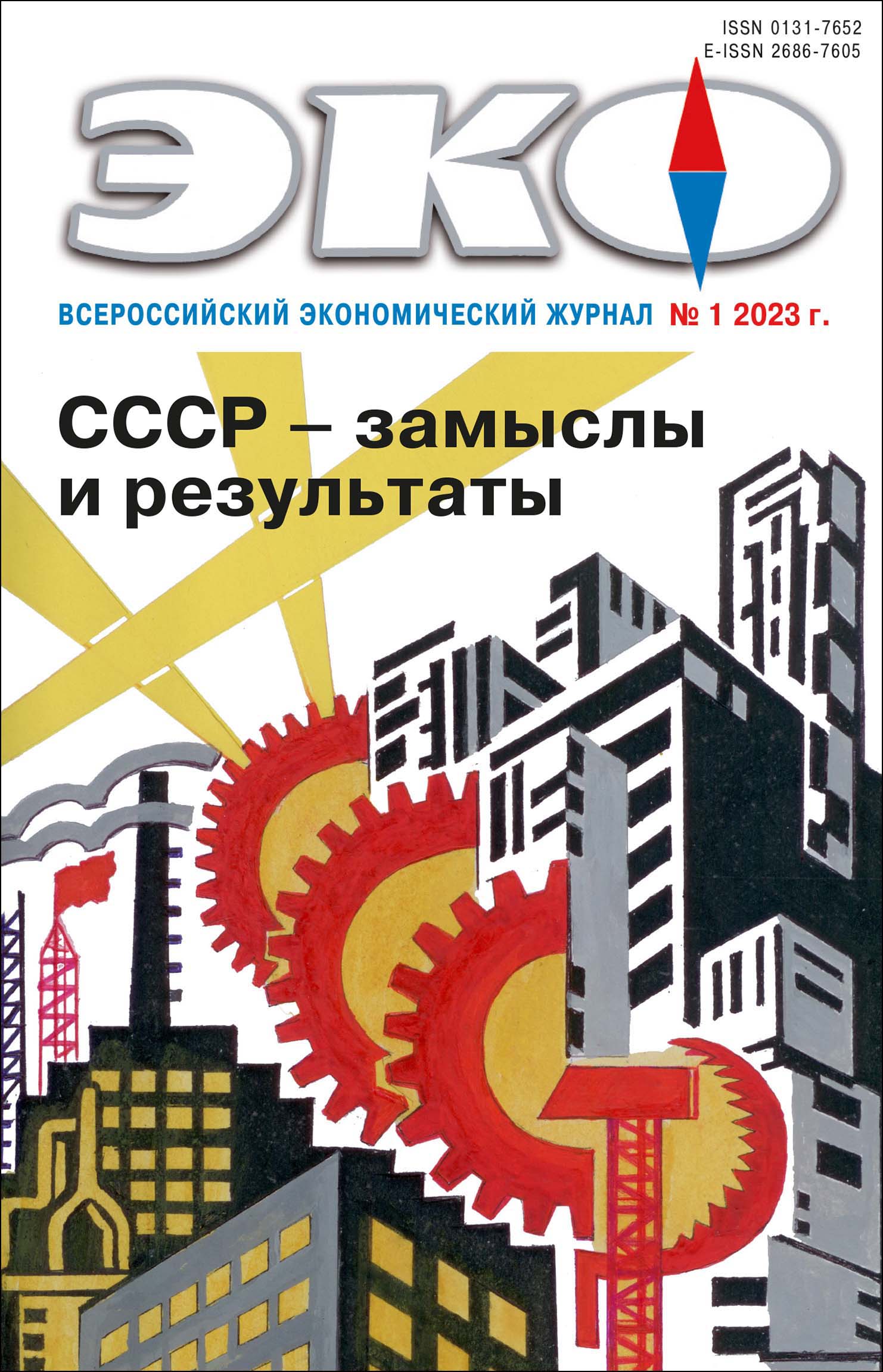PINNACLES OF ECONOMIC SCIENSE
Published 2022-12-29
Keywords
- Nobel Prize in Economics; function of banks; financial crisis; defaults; liquidity; monetary multiplier; mortgage credit; government intervention; Federal Reserve System
How to Cite
1.
Voronov Ю. Economic Science against Crises. About the 2022 Nobel Prize in Economics. ECO [Internet]. 2022 Dec. 29 [cited 2025 Dec. 28];53(1):177-92. Available from: https://ecotrends.ru/index.php/eco/article/view/4561
Abstract
The paper examines the results of the research of Nobel Prize in Economics 2022 winners Ben Bernanke, Douglas Diamond and Philip Dibvig. These results are grouped by the author into four centers: the fight against the crisis, the generalized role of banks, the possibility of exiting the world crisis without war and the liquidity model. The measures implemented by one of the laureates in practice during the struggle for reducing the negative consequences of the crisis in 2008 are considered and evaluated. The problem of the fundamental possibility of overcoming the global economic crisis without a war, the possibility of which was substantiated by the laureates, is touched upon. The description of the model of banks’ liquidity, developed by D. Diamond and F. Dybvig is presented. It is widely used in the banking sector for analytical modeling.References
- Бэджгот У. Ломбардстрит. Критическое исследование об организации и деятельности английского денежного рынка. СПб., 1896.
- Воронов Ю. П. Экспериментальные ситуации как объект исследований экономической науки // ЭКО. 2022. № 2. С. 140–156. DOI: 10.30680/ECO0131-7652-2022-2-140-156
- Зарипов И. А. Цифровой банкинг: смена парадигмы современных финансов // Мир новой экономики. 2022. № 2. С. 51–63.
- Рубини Н., Мим С. Как я предсказал кризис. Экстренный курс подготовки к будущим потрясениям. М.: Эксмо, 2011. 384 с.
- Сивков К. Мировая война как выход из глобального кризиса // Военное обозрение. 2012. 13 декабря.
- Хазин М. Л. Предисловие к книге: Рейнхарт К., Рогофф К. На этот раз всё будет иначе. Восемь столетий финансового безрассудства. М. Альпина Паблишер, 2014.
- Andolfatto, D. (2007). Moral Hazard in the Diamond-Dybvig Model of Banking. SSRN Electronic Journal. January.
- Bernanke, B. (2002). Remarks by Governor Ben S. Bernanke at the Conference to Honor Milton Friedman, University of Chicago, No. 8. Available at: https://www.federalreserve.gov/boarddocs/Speeches/2002/20021108/default.htm
- Bernanke, B. (2008). Current Economic and Financial Conditions. Federal Reserve. Oct. 7.
- Bernanke, B.S. (1983). Non-Monetary Effects of the Financial Crisis in the Propagation of the Great Depression. The American Economic Review. Vol. 73. No. 3 (Jun,). Pp. 257–276.
- Bryant, J. (1980). A model of reserves, bank runs, and deposit insurance. Journal of Banking and Finance. No. 4. Рp. 335–344.
- Diamond, D.W. (1984). Financial Intermediation and Delegated Monitoring. Review of Economic Studies. Vol. 51. July. Рp. 393–414.
- Diamond, D.W. (1996). Financial Intermediation as Delegated Monitoring: ASimple Example. Federal Reserve Bank of Richmond Economic Quarterly. Vol. 82 No. 3. Рp. 51–66.
- Diamond, D.W. (2007). Banks and Liquidity Creation: A Simple Exposition of the Diamond-Dybvig Model. Economic Quarterly. Vol. 93. No. 2. Pp. 189–200.
- Diamond, D.W., Hu, Y. Rajan, R.G. (2020). Pledgeability, Industry Liquidity, and Financing Cycles. The Journal of Finance. Vol. LXXV. No.1. Рp. 419–461.
- Friedman, M., Schwartz, A.J. (1963). A Monetary History of the United States, 1863–1960. Princeton University Press.
- Samuelson, P. (1958). An exact consumption-loan model of interest with or without the social contrivance of money. Journal of Political Economy. Vol. 66. Рp. 467–482.
- Sultanum, B. (2016). Nonparametric Estimation of the Diamond-Dybvig Banking. Vol. 102. No. 4. Pp. 261–279.

